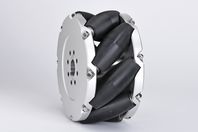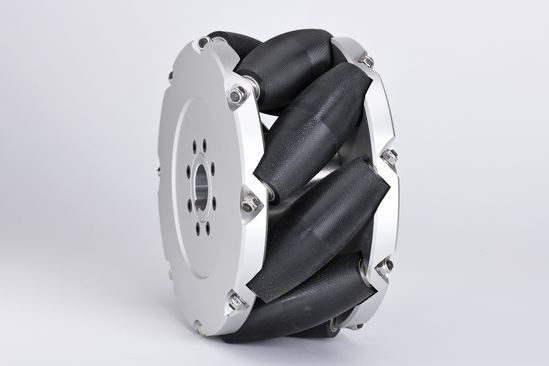Asia
EMEA

LANXESS Canada Contacts
Contact our Sites in Canada
Media Inquiries
General Inquiries
Please click here to e-mail LANXESS Canada with product inquiries and general requests.
Global Press Releases
2019-07-02
Low-free prepolymers from LANXESS
Below limits of EU restrictions
- Time-consuming certifications and training are not required
- Especially relevant for coatings, adhesives and sealants
- High occupational hygiene and health protection
Cologne – Specialty chemicals company LANXESS is well prepared for the planned EU restriction on diisocyanates. With its Low Free (LF) technology, polyurethane (PU) prepolymers can be produced that contain less than 0.1 percent by weight of free isocyanate monomer. LF prepolymers are therefore not affected by the upcoming European restriction proposal for diisocyanates and can be used without new restrictions as before.
In May 2018, the European Chemicals Agency (ECHA) presented its position paper on the planned restriction procedure for diisocyanates. It can be assumed that the European Union will adopt the proposed regulations on health protection in the coming months. It is becoming apparent that the restrictions will have a significant impact on work and operational processes. In summary the restrictions will apply to the handling of basic diisocyanates such as MDI (methylenediphenyl diisocyanate), TDI (toluene diisocyanate) or HDI (hexamethylene diisocyanate), as well as conventional two-component (2K) PU systems and PU prepolymers whose free diisocyanate monomer content exceeds 0.1 percent by weight.
Complex certifications
The restriction procedure provides for binding and verifiable technical measures to improve safety and occupational health. Above all, companies must train their employees in the safe handling and use of diisocyanate-containing materials and provide evidence of this in the form of a certificate. The training is especially complex, because it becomes more and more extensive with growing extent of exposure and has to be repeated every four years. Around five million employees along the entire value chain of the PU industry are affected – from manufacturers and importers to system houses, formulators and processors.
CAS applications benefit above all
Adiprene LF prepolymers from LANXESS are suitable material alternatives that minimize exposure to free isocyanate and thus circumvent the new restriction process. They are manufactured using LF technology and contain less than 0.1 weight percent free diisocyanate. Automotive manufacturers in particular are currently showing great interest in CAS material solutions with low residual monomer content. They want to avoid extensive employee training and focus explicitly on product solutions that have a low hazard classification.
Purification step reduces diisocyanate content in prepolymer
Adiprene LF prepolymers are manufactured using LF technology and contain less than 0.1 weight percent free diisocyanate. This very low level is obtained by vacuum distillation immediately following the initial polyaddition to build up the prepolymers. The stripping step separates unreacted diisocyanate monomer from the prepolymer. The technology can be applied to a wide variety of diisocyanate prepolymers, including MDI-based systems. Due to the residual diisocyanate being less than 0.1 percent, these LF prepolymers are not classed as hazardous, and respective labelling requirements are avoided.
Better performance of end products
Adiprene LF prepolymers not only offer advantages in terms of health protection, industrial hygiene and safety. Compared to similar standard prepolymers, they also result in technically higher-performance PU end products. This is because the polymer morphology can be controlled more precisely using the LF technology. This results in a highly structured phase segregation between crystalline hard and amorphous soft segments, which is manifested in better physical and mechanical properties of the PU product. For example, PU systems can be formulated that are very elastic, and tear-resistant as well as displaying high tensile strength. In addition, a narrower molecular weight distribution and a more pronounced physical cross-linking are attained. The viscosity of the prepolymers can be varied widely at a constant isocyanate content (NCO content) and can be adapted to processing conditions, equipment and desired product properties. In the case of coating systems, for example, the wetting behavior and coverage rate during application can be optimized in this way.
Forward-Looking Statements
This company release contains certain forward-looking statements, including assumptions, opinions, expectations and views of the company or cited from third party sources. Various known and unknown risks, uncertainties and other factors could cause the actual results, financial position, development or performance of LANXESS AG to differ materially from the estimations expressed or implied herein. LANXESS AG does not guarantee that the assumptions underlying such forward-looking statements are free from errors nor does it accept any responsibility for the future accuracy of the opinions expressed in this presentation or the actual occurrence of the forecast developments. No representation or warranty (expressed or implied) is made as to, and no reliance should be placed on, any information, estimates, targets and opinions, contained herein, and no liability whatsoever is accepted as to any errors, omissions or misstatements contained herein, and accordingly, no representative of LANXESS AG or any of its affiliated companies or any of such person's officers, directors or employees accept any liability whatsoever arising directly or indirectly from the use of this document.
LANXESS is a leading specialty chemicals company with sales of EUR 7.2 billion in 2018. The company currently has about 15,500 employees in 33 countries and is represented at 60 production sites worldwide. The core business of LANXESS is the development, manufacturing and marketing of chemical intermediates, additives, specialty chemicals and plastics. LANXESS is listed in the leading sustainability indices Dow Jones Sustainability Index (DJSI World and Europe) and FTSE4Good.
- Gallery




